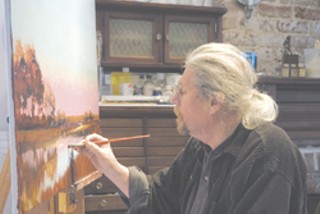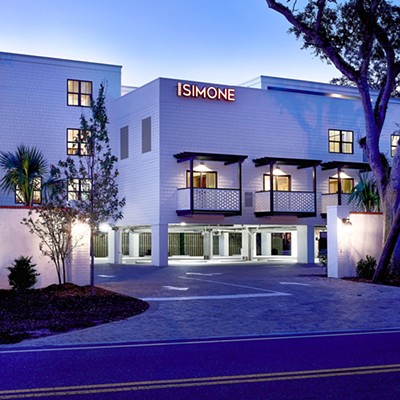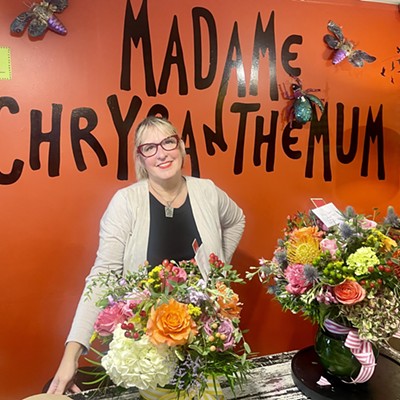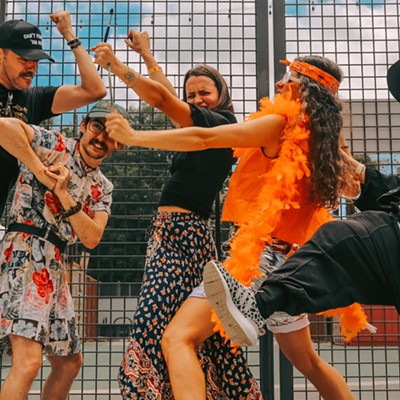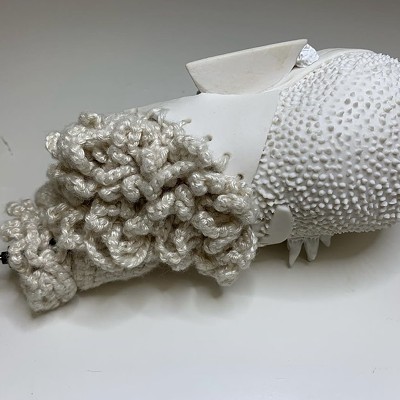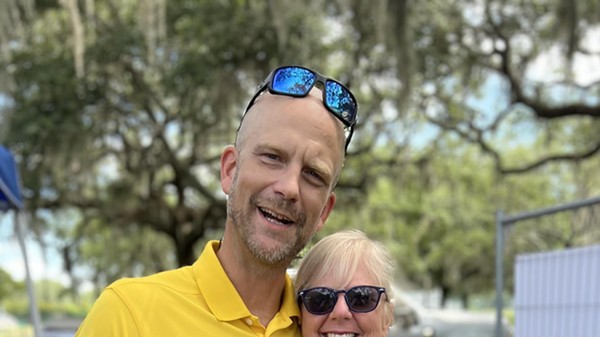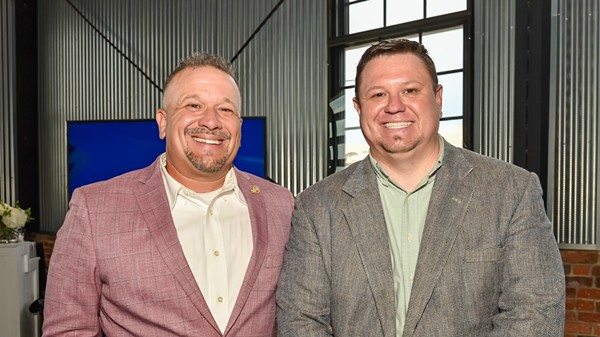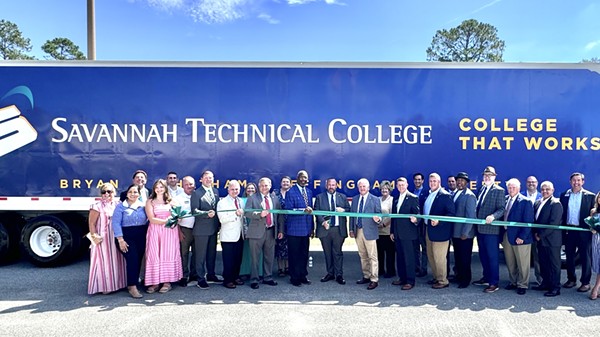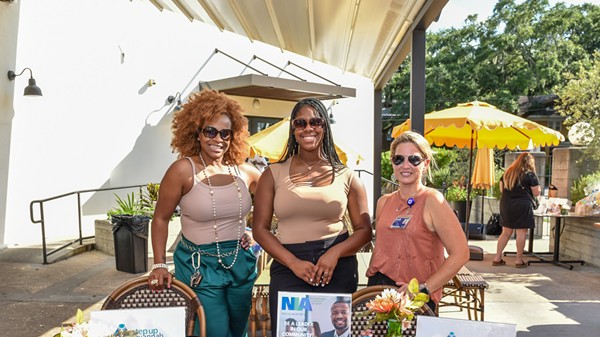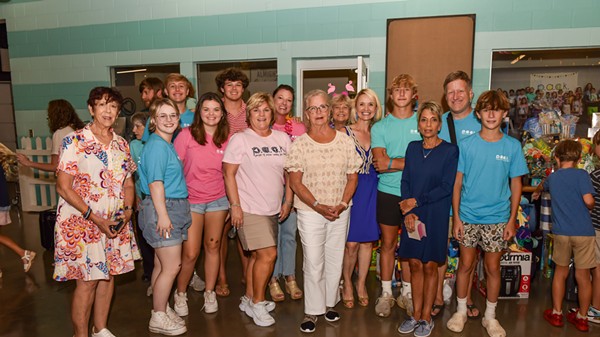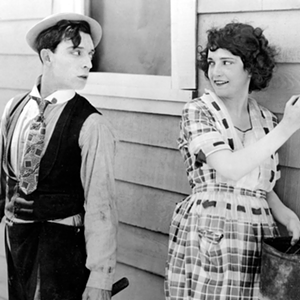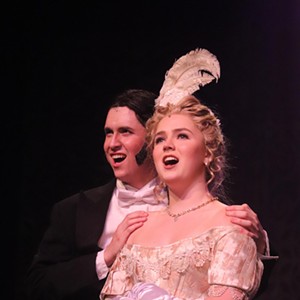WILLIAM ARMSTRONG is old school. The locally-based, world-renowned painter doesn’t believe in overexposure, but rather in the value of a certain amount of mystique.
To that end Armstrong has done only a single annual show for the past several years, out of his Taylor Street home. The annual receptions — organized by Armstrong’s delightful French wife Monique, an innkeeper of some renown herself — are always packed to the gills with art lovers from around the city, region and indeed the entire country, They are one of the most-anticipated arts events of the year, due in no small part to their rarity.
This year is no exception, as the artist is again holding a single 2007 show the weekend of Oct. 12-14, with a reception that Friday night from 5-9 p.m.
What will change this year is the location. The show will not be at his home, as in years past, but in a studio/showroom space at 145 Habersham St.
The Newark, N.J., native decided to stay in Savannah when he came her as a set artist for the movie The Legend of Bagger Vance, in which he was responsible for painting much of the sets in City Market. Since then he’s become beloved for his unique take on the natural landscape of the Georgia and South Carolina coast.
We spoke to Armstrong last week.
So you’re taking the show on the road to a new gallery.
William Armstrong: Well, I have an art studio with a showroom. I’m not actually running a gallery. That’s the last thing I want to do in the world. Plenty of people want to run galleries, but being downtown if I lock my door I’ll still have people knocking on the door asking directions all the time.
Other than the location, what’s different about this year’s show?
William Armstrong: Now that I have my own studio I can show a lot more work. What I’m doing is putting up a lot of work from 60 years ago to the present. In the front room, which is done more like a showroom, will be my recent work. In the other part, my workshop, the walls will be covered by works from about the last 50 or 60 years, from when I was a little kid. I’ll be showing a lot of different styles — abstract expression, drawings, etchings, sculpture, prints.
What I want to do is expose people to some of the older pieces of work so they can see how it ties in with what I do today. I think that’s what will make this show very different — people can see the progression.
You could say it’s a retrospective, I guess.
Your work isn’t abstract, but it’s not hyperrealism either. Each painting is identifiable, like a kid riding a bike on the beach, but it all has an added luminous, backlit quality.
William Armstrong: That’s exactly right, but a lot of people don’t realize that. One of the things I paint is light, and in painting light you’re not just copying a photograph.
What I do is sketch it out in charcoal and then rework the composition. I draw it in black first, and the paint is all done with brush strokes. If I put a tree in front of the sky, for instance, I’ll paint the tree in black first and then paint sky all around the branches. That way I’m in control of all the abstract shapes within the painting. Once I explain that to people, they say, ‘Wow, that’s interesting — I’ll have to try that.’
I think of my paintings as semi-abstract — they’re not photorealistic, they’re not impressionist. They’re painterly, I guess you’d say. That mostly comes from my experience with watercolors. For example, in doing Japanese brushpaintings you use the brush to its fullest capacity, instead of just globbing paint on it and spreading it out on every brushstroke.
That seems evident in your texture.
William Armstrong: There’s very rarely a lot of texture in my paintings. They’re actually very smooth. I keep my paint long, as the expression goes. That means there’s a lot of medium or oil. I add a lot of linseed oil so that the paint flows a lot easier. Also I work on a fast surface. So I can blend very nicely and you really don’t see brushstrokes.
I don’t want to rehash all the other interviews you’ve done about your Hollywood experience, but it does occur to me that that experience must have given you a great amount of technical knowledge.
William Armstrong: Working film is not creative, it’s more of a craft. The film business is like another world. You’re always working in a different medium and you approach things differently. Everything’s make-believe. If I do a fake brick building and paint all the bricks, I don’t think of anything more than what it’s supposed to be in movie.
The kind of painting I do for movies and the kind I do in my studio rely on the same experiences and a lot of the same knowledge, but one’s a craft and one’s an art form. It’s like the difference between writing a symphony or a jingle.
Do you spend most of the year preparing for the show? Are you selling work year-round?
William Armstrong: I do sell throughout year. I’ve got lots of commissions this year, a tremendous amount. That’s one reason I put the showroom together, so that we’ll have a place to entertain dealers and people who are buyers. The importance is more the studio aspect than it is the gallery. I like people to see where I work.
It strikes me that you’re from New Jersey, which has its own marshy shoreline. Why are you seemingly more inspired by our landscape rather than your own native one?
William Armstrong: Yeah, the whole Jersey shore is very similar to here, except of course where you have towns already built up on it. So it’s not something totally new to me, a flat landscape with lots of water and grass. Here though, you have a lot more water. It’s almost all islands. I travel in a boat along inlets and rivers and I always see something new everytime I go around the corner. I’ve seen deer swimming, otters playing. There’s a special light in the sky down here that leads to all these great cloud formations. Maybe the light here is different because of the temperature differential of the land mass and the ocean.
Overall it’s a much calmer vision here. In the people too.
William Armstrong’s show is at 145 Habersham St. Oct. 13-14 from 1-6 p.m. with a reception Oct. 12 5-9 p.m. Armstrong is also on display regionally at the Reynolds Square Gallery and the Charles II Gallery in Charleston.

